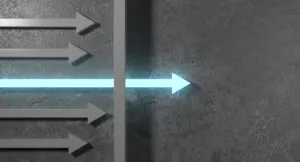Introduction
Lithium-ion (Li-ion) batteries are currently the dominant technology in the rechargeable battery market, widely used in consumer electronics, Electric Vehicles (EVs), and grid energy storage applications. Their popularity stems from their high energy density, long cycle life, and relatively low self-discharge rates. Recent advancements have focused on improving these batteries’ performance, safety, and cost-effectiveness. For instance, researchers are exploring new materials and chemistries to enhance energy density and reduce reliance on scarce and expensive elements like cobalt.
Moreover, Li-ion batteries are playing a crucial role in the transition to renewable energy. They are increasingly being integrated with solar and wind power systems to store excess energy and provide a stable power supply when generation is low. This integration is essential for addressing the intermittency of renewable energy sources and ensuring a reliable and sustainable energy grid. Despite these advancements, challenges such as thermal stability, recycling, and raw material sourcing remain, driving ongoing research and development efforts to create even more efficient and sustainable battery technologies.
Evolution of Lithium-Ion Battery Technology: From 1991 to Today
1991: Sony commercialized the first lithium-ion battery, revolutionizing portable electronics with its high energy density and lightweight design.
1996: Introduction of lithium iron phosphate (LiFePO4) as a cathode material, enhancing safety and cycle life.
2001: Development of lithium nickel manganese cobalt oxide (NMC) cathodes, which offered a balance of performance, cost, and safety, making them popular in electric vehicles.
2010: Tesla’s Roadster showcased the potential of lithium-ion batteries in electric vehicles, leading to increased investment and research in battery technology.
2014: Introduction of silicon anodes, which significantly increased the energy density of lithium-ion batteries.
2016: Solid-state lithium-ion batteries began gaining attention for their potential to offer higher energy densities and improved safety compared to traditional liquid electrolyte batteries.
2021: Advancements in recycling technologies aimed at recovering valuable materials from used lithium-ion batteries, addressing environmental concerns.
2023: Breakthroughs in solid-state battery technology, including the use of lithium metal anodes, promise to further enhance energy density and safety.
2024: Ongoing research focuses on reducing the reliance on scarce materials like cobalt and improving the sustainability of lithium-ion battery production.
Latest Technological Advancement in Li-Ion Batteries
Solid-State Lithium-Ion Batteries: The Future of Energy Storage
Solid-state lithium-ion batteries represent a significant leap forward in energy storage technology. Unlike traditional lithium-ion batteries that use liquid electrolytes, solid-state batteries employ solid electrolytes, which offer several advantages. These include higher energy density, improved safety due to reduced risk of leakage and combustion, and faster charging times. Recent breakthroughs have focused on overcoming challenges such as dendrite formation, which can short-circuit batteries, by using innovative materials like lithium metal anodes and advanced solid electrolytes. As research progresses, solid-state lithium-ion batteries are poised to revolutionize various industries, from electric vehicles to portable electronics, by providing more efficient, durable, and safer energy storage solutions.
Anode-Free Sodium Solid-State Batteries: A Cost-Effective Alternative
Anode-free sodium solid-state batteries are emerging as a promising and cost-effective alternative to traditional lithium-ion batteries. These batteries utilize sodium, which is more abundant and less expensive than lithium, making them an attractive option for large-scale energy storage applications. The absence of an anode in these batteries simplifies their design and reduces manufacturing costs. Recent advancements have focused on improving the stability and capacity of these batteries, addressing challenges such as maintaining a stable interface between the solid electrolyte and the sodium metal. With ongoing research and development, anode-free sodium solid-state batteries have the potential to provide a more sustainable and economical solution for energy storage, particularly in grid storage and other large-scale applications.
Innovative Materials and Chemistries in Lithium-Ion Batteries
New Cathode Materials
Researchers are exploring alternatives to cobalt-based cathodes due to high costs and environmental impact. A low-cost cathode material using iron chloride has been developed. This innovation significantly reduces costs while maintaining energy capacity. Cobalt-free batteries utilizing organic materials are designed to provide similar performance with lower environmental and social costs.
Silicon Anodes
Silicon anodes are being integrated into lithium-ion batteries to replace conventional graphite anodes. Silicon has the potential to store up to ten times more lithium ions. This capability significantly enhances the battery’s energy density. However, challenges such as volume expansion during charging cycles are addressed through innovative designs and materials.
Solid-State Electrolytes
Solid-state batteries utilize solid electrolytes instead of liquid ones. This design enhances safety by reducing the risks of leakage and combustion. Furthermore, solid electrolytes allow for lithium metal anodes, which can increase energy density. Recent advancements in solid-state electrolytes make these batteries increasingly viable for commercial applications.
Advanced Nanomaterials
The integration of nanomaterials in both cathodes and anodes is improving lithium-ion battery performance. Nanostructured materials provide higher surface areas and enhanced conductivity. This leads to batteries that charge faster and operate more efficiently. Overall, these advancements result in longer-lasting batteries that meet modern energy demands.
Market Forecast: The Future of Lithium-Ion Batteries
The market for lithium-ion batteries is poised for significant growth in the coming years, driven by the increasing demand for EVs, renewable energy storage, and portable electronics. Analysts predict that the global lithium-ion battery market will grow due to advancements in battery technology, such as higher energy densities, faster charging times, and improved safety features. Additionally, government policies promoting clean energy and the electrification of transportation are accelerating the adoption of lithium-ion batteries. As the market evolves, we can expect further innovations aimed at reducing costs, enhancing performance, and addressing sustainability challenges, ensuring that lithium-ion batteries remain a cornerstone of the energy storage landscape for years to come.
Environmental and Economic Impacts of Lithium-Ion Battery Advancements
Environmental Impacts:
Reduction in Greenhouse Gas Emissions: Lithium-ion batteries play a crucial role in reducing greenhouse gas emissions by enabling the widespread adoption of electric vehicles (EVs) and renewable energy storage. For instance, the use of lithium iron phosphate (LFP) batteries in EVs can lead to substantial emission savings compared to traditional internal combustion engines.
Resource Extraction and Pollution: The mining and processing of raw materials like lithium, cobalt, and nickel can have severe environmental consequences, including habitat destruction, water pollution, and high energy consumption. However, advancements in battery recycling technologies are helping to mitigate these impacts by recovering valuable materials and reducing the need for new mining.
Battery Recycling: Improved recycling methods, such as hydrometallurgical and pyrometallurgical processes, can significantly reduce the environmental footprint of lithium-ion batteries. These methods help reclaim critical materials, thus lowering the demand for virgin resources and reducing the overall environmental impact.
Economic Impacts:
Cost Reduction: Technological advancements have led to a significant decrease in the cost of lithium-ion batteries. This reduction has made EVs and renewable energy storage systems more affordable, accelerating their adoption and driving economic growth in these sectors.
Job Creation: The growing lithium-ion battery industry has created numerous jobs in manufacturing, research and development, and recycling. This growth supports economic development in regions involved in the battery supply chain.
Market Expansion: The increasing demand for lithium-ion batteries has spurred investment in related industries, such as mining, battery manufacturing, and recycling. This expansion is expected to continue, with the global lithium-ion battery market projected to grow significantly in the coming years.
Case Study: Toyota’s Development of a New Solid-State Battery for Electric Vehicles
Background
Toyota has long been a pioneer in automotive technology, particularly in the realm of hybrid and EVs. Recognizing the limitations of traditional lithium-ion batteries, such as limited energy density, safety concerns, and long charging times, Toyota embarked on a mission to develop a more advanced battery technology. The goal was to create a solid-state battery that could overcome these challenges and significantly enhance the performance and practicality of EVs.
Challenge
The primary challenge in developing solid-state batteries lies in finding suitable materials for the solid electrolyte and ensuring stable interfaces between the electrolyte and the electrodes. Traditional liquid electrolytes in lithium-ion batteries are prone to leakage and combustion, posing safety risks. Solid electrolytes, on the other hand, can potentially eliminate these risks but present their own set of challenges, such as dendrite formation, which can short-circuit the battery. Additionally, achieving high energy density and fast charging times without compromising the battery’s lifespan has been a significant hurdle.
Development and Breakthrough
Toyota’s research and development team focused on innovative materials and designs to address these challenges. They experimented with various solid electrolytes and lithium metal anodes to enhance energy density and safety. In 2023, Toyota announced a major breakthrough: a solid-state battery capable of delivering a range of up to 745 miles on a single charge and recharging in just 10 minutes. This development was achieved by discovering a new material that improved the longevity and stability of the battery, allowing for practical and efficient energy storage.
Result
The successful development of this solid-state battery marks a significant milestone in the EV industry. Toyota’s new battery technology promises to revolutionize the market by providing longer ranges, faster charging times, and enhanced safety. This breakthrough has the potential to accelerate the adoption of EVs, reduce range anxiety, and make electric vehicles more competitive with traditional gasoline-powered cars. Toyota aims to begin mass production of these batteries by 2027, which could significantly impact the automotive market and contribute to a more sustainable future.



